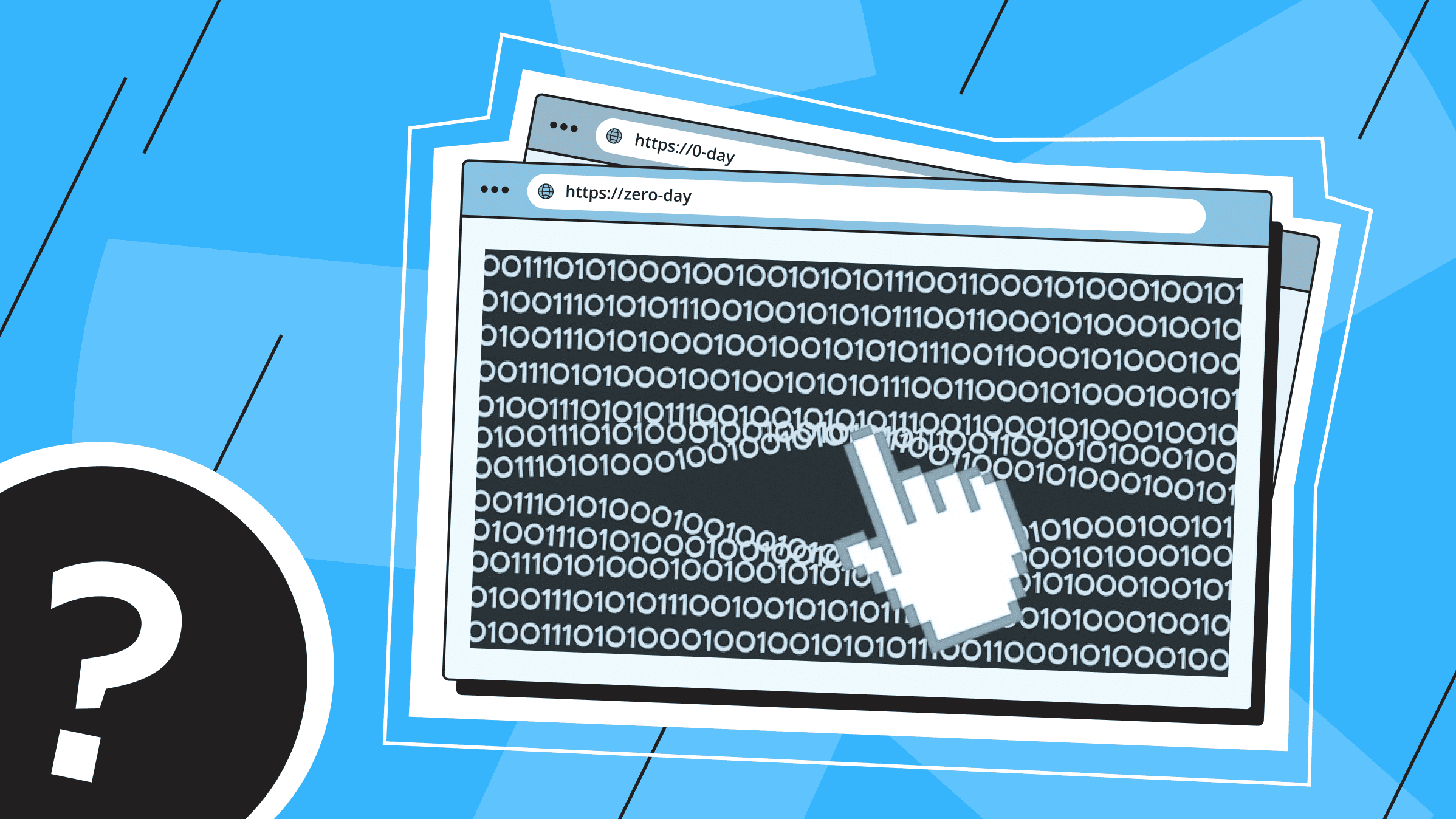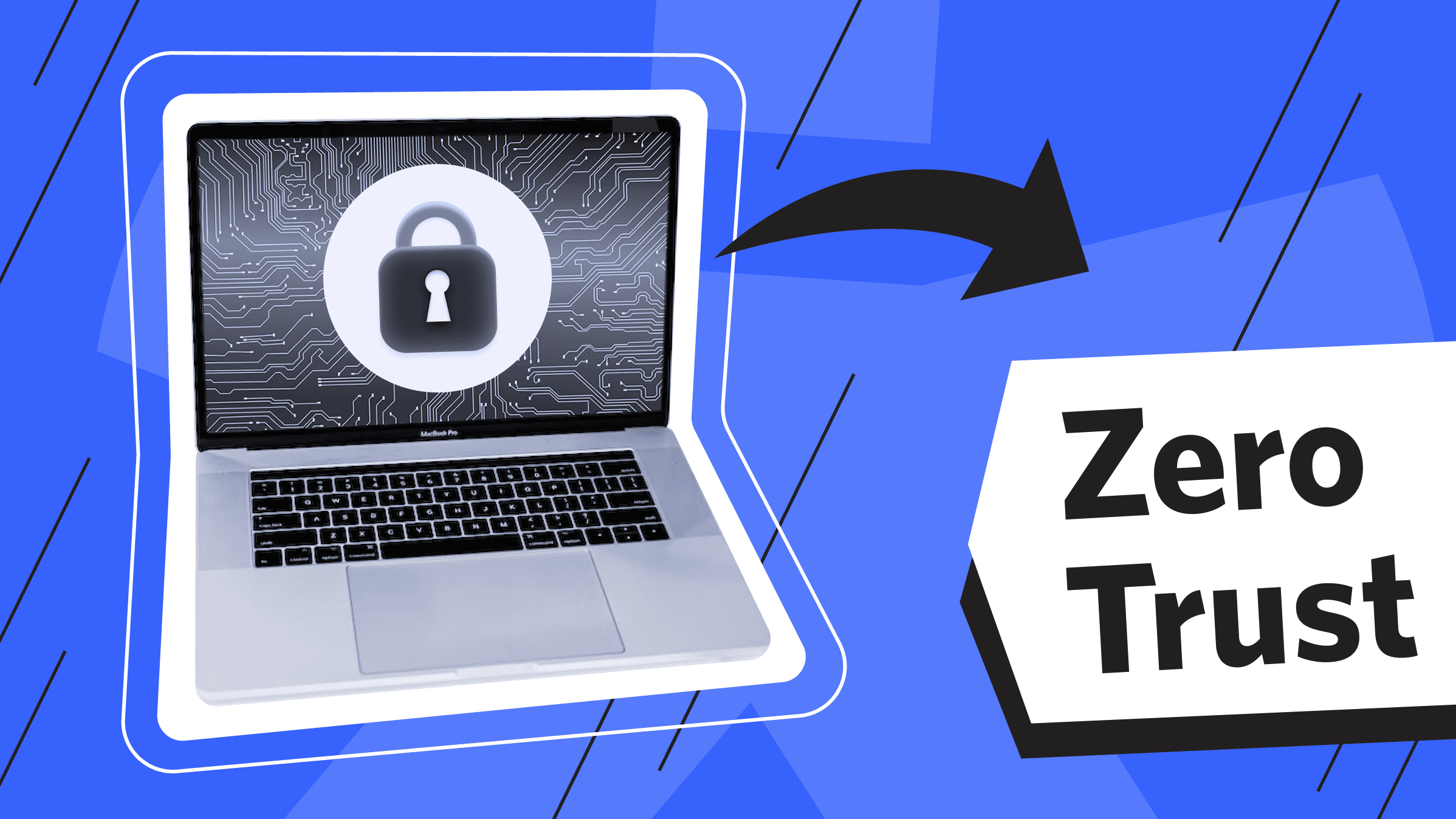
The term 'zero-day' refers to vulnerabilities that cyber attackers exploit before developers can react.
This article will examine several well-known examples of zero-day attacks and provide best practices for mitigating vulnerability exploits.
What is a Zero-Day Vulnerability?
A zero-day vulnerability is a security flaw in software that developers are unaware of. The term 'zero-day' refers to the number of days the vulnerability has been known to interested parties. Systems remain vulnerable until the problem is discovered and fixed.
Attackers who are aware of zero-day vulnerabilities can infiltrate systems undetected. Antivirus programs and firewalls cannot protect against unknown vulnerabilities, putting entire companies at risk.
The lifecycle of zero-day vulnerability is summarized in the following steps:
- A security professional or attacker may discover a vulnerability that can be exploited for financial gain, espionage, or other malicious purposes.
- Incident response teams, security tools, or other professionals can detect ongoing attacks.
- The appropriate professionals then develop a patch to address the vulnerability, which organizations can apply to their systems.
- Any damage caused by the exploit should be assessed and repaired.
Zero-day vulnerabilities are highly prized in black markets, but once discovered, they quickly lose their value to hackers.
Zero-Day Attack Targets
Zero-day attacks are among the most sophisticated cyber threats. Hackers can exploit zero-day vulnerabilities before the target is even aware of them.
Targeted zero-day attacks are carried out against high-value targets, such as large organizations, government agencies, or high-ranking individuals. These attacks exploit vulnerabilities in browsers, web applications, open-source components, and IoT devices through malware.
Large organizations, government agencies, and individuals with access to valuable data can all be targeted by attackers, causing harm to many people. It is essential to take measures to protect against such attacks.
Who is Carrying out the Zero-Day Attacks?
Individuals who seek to benefit from a zero-day attack can act as enforcers. These cases can be surprising in their ingenuity, whether the motivation is financial gain, attention-seeking, corporate espionage, or cyber warfare.
Zero-day attacks often make headlines, with various hacker groups claiming or denying responsibility.
Zero-Day Exploit

Detecting all vulnerabilities in thousands of lines of code is nearly impossible. Automated scanning and phasing can assist, but much is still overlooked. Technologies are constantly evolving due to updates and upgrades, and by the time one aspect is analyzed, another has already changed, creating new issues.
Hackers employ various methods to uncover vulnerabilities that software developers may have overlooked. Frequently, they use fuzzing tools that automatically input unexpected or incorrect data into programs and APIs to detect bugs and faults. By sending large amounts of random data, these tools can expose memory corruption issues or logical flaws.
Reverse engineering is a common technique used to understand how software functions and test it for weaknesses.
By parsing the code statically, hackers can identify areas where data input has not been adequately sanitized, error handling is missing, or sensitive data has been leaked. Hackers can detect even the most minor vulnerabilities through program logic and design analysis.
By monitoring network traffic for unusual behavior or bug responses that require deeper inspection, zero-day vulnerabilities can be identified without direct access.
What’s next?
After identifying a potential weakness, hackers attempt to keep their presence hidden and test the vulnerability to avoid false results. They may also create special overloads to analyze the process with precision. If they successfully exploit the vulnerability, they examine the resulting memory dumps or process behavior to fully understand the nature of the bug.
Attackers can only perform an exploit unnoticed by software developers after making these preparations. Their goal is to exploit the vulnerability before a patch is released.
Exploiting the flaw can serve various purposes, including creating an infrastructure for ransomware or crypto miners to attack vulnerable hosts and spread remotely. It can also enable the design and launch of targeted attacks against valuable targets and individuals. Additionally, a specific zero-day vulnerability may be sold on the darknet to those interested in compromising specific software or gaining other benefits.
Hackers may demand ransom for valuable data or establish long-term covert access to your systems before logs and security systems notice the vulnerability and offer failure reports.
Well-known Zero-Day Attacks

Google's Threat Intelligence Team reported that in 2023, 44 out of the 69 disclosed zero days were exploited between January and September. In 2022, 41 zero days were observed being used maliciously.
Mandiant reported that in 2022, Microsoft, Google, and Apple products and services accounted for almost 70% of all exploited zero days.
Some of the most famous cases of zero-day attacks are:
- In April 2019, Facebook experienced an attack that led to discovering two third-party Facebook app datasets publicly available online. One of these datasets contains over 540 million records, including comments, likes, reactions, account names, and FB IDs.
- In November 2019, a developer stole customer data from Alibaba's Chinese retail site, affecting 1.1 billion users. The hacker used crawler software to gather information over eight months.
- In June 2021, LinkedIn experienced a Zero-day attack that impacted 700 million users, accounting for over 90% of LinkedIn's user base. During the attack, a hacker obtained data through the site's API and publicly shared information on 500 million users. The hacker also threatened to sell the complete data set of compromised accounts.
Who was affected by zero-day attacks in 2023?
On October 17, 2023, a critical vulnerability was discovered in Cisco IOS XE, identified as CVE-2023-20198, allowing remote code execution.
The vulnerability is related to improper privilege management in the web interface, enabling a remote attacker who has not been authenticated to create an account with privilege level 15 by sending a specially crafted HTTP request.
The Skype for Business Server application has a vulnerability that allows a remote attacker to access potentially sensitive information by causing excessive data output. An unauthorized remote attacker could exploit this vulnerability to gain access to IP addresses and user port numbers.
In 2023, Google released multiple patches to address Chrome vulnerabilities following eight browser attacks.
The list of such attacks in the past year is not limited to these examples. These incidents demonstrate the vulnerability of companies and the potential risks faced by users of digital products.
Mitigating Zero-Day Risks

Mitigating zero-day risks is critical in cybersecurity because of the potential damage these vulnerabilities can cause before developers release a patch.
- To manage the release and installation of patches, regularly monitor updates.
- Reduce the impact of a potential exploit by segmenting the network.
- Prevent lateral movement of attackers by isolating critical systems from less sensitive ones.
- Avoid the use of unauthorized programs by using whitelists of applications that can be run on a system.
- Detect anomalous activity on a system by implementing file access analysis tools.
- Intrusion Detection and Prevention Systems (IDPS) can identify and block potential zero-day threats by analyzing network traffic and system behavior.
- Deploy robust security measures at the network and endpoint levels. This includes firewalls, antivirus software, and endpoint detection and response (EDR) solutions to strengthen security.
- Develop an incident response plan and test it regularly. This will ensure a coordinated and effective response during a zero-day vulnerability exploit, minimizing the potential impact on systems and data.
Zero-day vulnerabilities are particularly dangerous because they are unknown. Attackers can exploit the vulnerability before it is discovered and fixed. To mitigate the risk of zero-day vulnerabilities, a multi-layered approach is necessary. This approach should combine technology solutions, user awareness, and proactive security measures.
Dedicated Server
Smooth operation, high performance, and user-friendly setup - it's all there for you.
From $9.99/mo24/7 Support
Rely on us. is*hosting technical support is available 24/7 and does not ignore customers.
Read More

